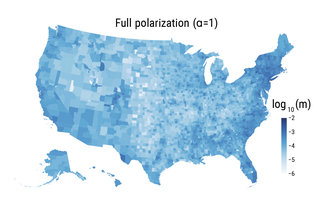(Concluded) Digital Mobilization Group
How has digital technology advanced crowdsourced social mobilization?
The advancement of digital technologies has intensified social communications and stimulated the emergence of voluntary and crowdsourced, real-world mobilization. Social mobilization has been emerging not only in eruptions of large-scale social movements, e.g. protests and campaigns, but also used for crowdsourced problem-solving, e.g. evacuation from natural disasters and containing pandemics. Therefore, understanding the potential as well as the limits of social mobilization can open new ways to respond to challenging social issues. Our main questions are:
- How have digital technologies mediated social mobilization?
- How can crowdsourcing and digital mobilization solve social problems?
- What would be the trade-offs and unexpected effects of social mobilization?
We use network science and large-scale datasets to analyze, understand, and predict social mobilization in the digital era.
Protest diffusion is a typical yet very complex, rapidly evolving, and unpredictable type of social mobilization occurring at the largest scale. While protests were observed to spread over different regions across the borders of countries, the shape and the reach of global protest diffusion have not been clearly understood.

